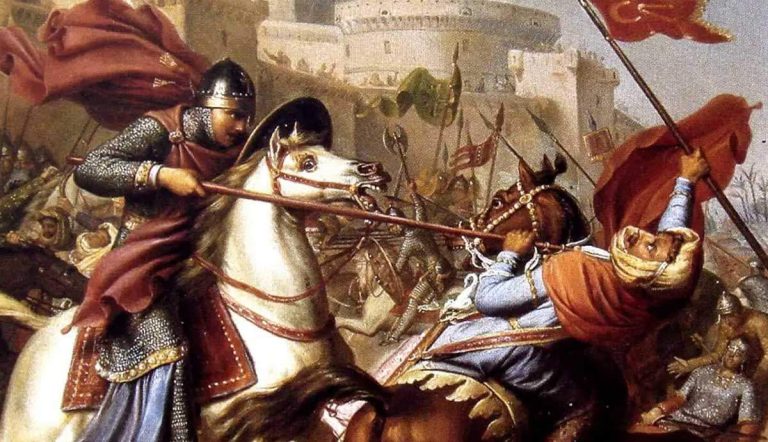
The Crusades were an attempt by the medieval Roman Catholic Church in the Middle Ages to use military force. reconquer the Holy Land (Jerusalem and its surroundings, where Jesus Christ lived and preached) from Muslim domination. Between 1096 and 1300 CE there were 8 Crusades and various other smaller actions undertaken by the Church. The effects of the Crusades were varied within Christianity.
A change in the power of the papacy

For the popes of the time, the Crusades held the promise of a consolidation of power. Christian armies composed of members from all countries each had a pope at their head and shared the same goal of supremacy. This meant, for a time, that popes held great theological and secular power, thus becoming another kind of prince in Europe rather than just a church leader. However, once the Crusades ended and generally failed in their goals, the popes faced weakened influence and a permanent break with the Eastern Church.
Shortly before the First Crusade, the Western Roman Catholic and Eastern Orthodox Churches split in 1054 over theological and authority disputes, in what became known as the Great Schism. Although there was still some dialogue between the two, the failure of the Crusades and the damage done by the Crusaders to the Eastern Church and the people made the divide permanent.
The creation of military orders

The Teutonic Knights, the Templars and the Knights Hospitaller are among the best-known organizations founded during the Crusades. Before this time, knights usually fought for kings or allied themselves with other nobles. During the Crusades, groups of knights formed to combine resources and share camaraderie in their mission to reconquer the Holy Land. Many of these groups would hold power to one degree or another well after the end of the Crusades.
Get the latest articles delivered to your inbox
Subscribe to our free weekly newsletter
A change in finances

Because financing the Crusades was very expensive and each knight was responsible for his own transportation and costs, new ways of moving money were necessary. Several cities, such as Venice, Genoa, and Pisa, became immensely wealthy by transporting knights and acquiring new trade routes. With so many resources needed, inventive financing became necessary and crusaders borrowed and entered into partnerships with others, often merchants who were not nobility, to finance their voyages.
New forms of taxation also emerged at this time, and the overall wealth of the Church also saw a large increase thanks to the gains made from some of the crusaders’ successes. Money as a medium of exchange also became more common, as much of the economy relied more on a barter system rather than currency.
Strained relations between Christians and Muslims

Before the Crusades, travelers could freely visit the Holy Land without much difficulty. However, relations became strained between Christians and Muslims due to repeated invasions by Christians in an attempt to gain territory. Persecution of Jews also intensified throughout Christendom, a tension that grew as Jews were generally the moneylenders of the Crusaders, who often had to turn to them as lenders of last resort.
Change in wealth

The contact that opened up between East and West during the Crusades actually increased certain connections that led to future developments. The Crusaders not only had access to the physical riches of the Middle East, but also intellectual and cultural wealth. The mathematical and scientific advances made by Muslims, as well as their retention of Greek and Roman literature laid some of the foundations for future developments in Western Europe that led to the Renaissance, the Reformation and beyond.
The effects of the Crusades on Christianity were felt further into the future than today. There were few major theological changes, although the break with the Eastern Church, which became permanent, and the changing status of the pope, were among the greatest religious effects. The impact on Europe outside of church affairs was far greater, opening it to the vast wealth of resources of the Middle East.

By Ryan WatsonMA History, BA HistoryRyan Watson is a husband, father, underwriter, writer and dealer. He earned bachelor’s and master’s degrees in history from Louisiana Tech University in the early 2000s. He focuses on biblical, post-biblical, and medieval history with occasional touches in other areas.


